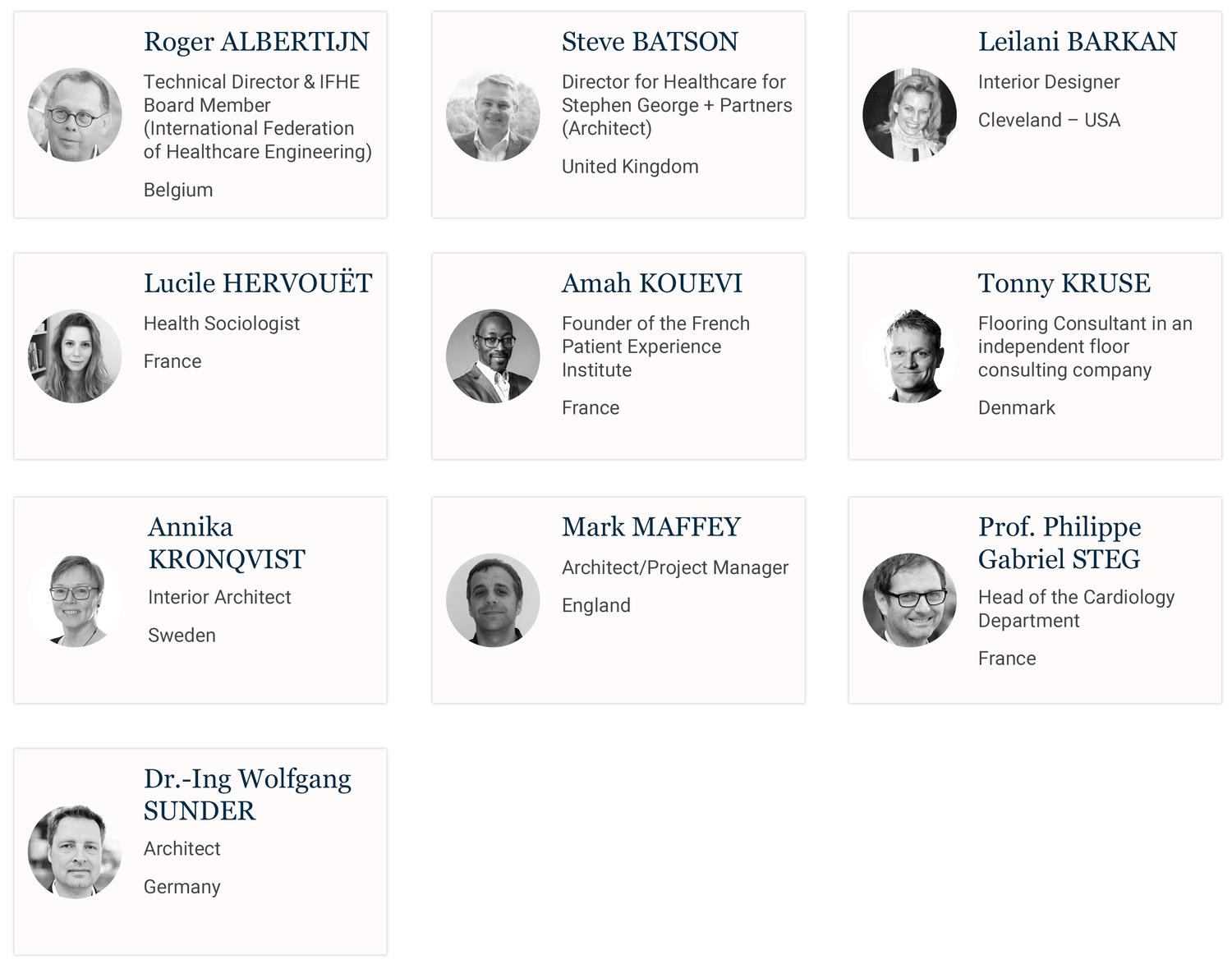
The Hospital of the Future: Challenges and Stakes
White Paper
Understanding the Challenges of the Hospital of the Future
Understanding human needs is at the heart of what we do, it is the basis for our Human-Conscious Design approach. We observed that the COVID-19 crisis was impacting healthcare organisations heavily and decided to investigate. Today, we are happy to share our findings in our new white paper The Hospital of the Future: Challenges and Stakes. This paper examines the human, logistical and technical challenges facing hospitals today, and it proposes some innovative ideas as envisioned by an international group of healthcare experts.
Tomorrow’s hospitals must become more efficient, eco-conscious, and human-centric. Our white paper includes the three pillars of a positive patient experience: improving access to care, empowering patients and families, and improving quality of life for patients and staff. Advances in hospital design could help achieve this, as could emerging technologies and human-centred approach.
And one thing is certain: nothing can happen without interdisciplinary cooperation. To meet the very real challenges of the coming decades, everyone involved in the healthcare sector must work together. It is in this spirit of collaboration and knowledge-sharing that Tarkett approached experts from across healthcare to research, investigate and discuss the hospital of the future, and produce this thought-provoking white paper.
10%
In 2050: 10% of the population will be 80 or over. (OECD Historical Population Data and Projections Database, 2015)
1 in 10
Adults in OECD countries are deemed unhealthy or in poor health. (OECD. Health at a Glance 2019. OECD indicators. 2019)
1/3
of people over 50 years old live with 2 or more chronic diseases. (OECD. Health at a Glance 2019. Chronic disease morbidity. 2019)
Methodology
Our methodology for this white paper was straightforward: following an extensive review of the existing literature on the subject, we gathered respected professionals from across the globe with a wide range of healthcare and hospital expertise for in-depth qualitative interviews. An ensuing roundtable discussion brought these experienced minds together and helped to crystallise a vision for the future of hospitals. This white paper is the synthesis of all we learned during that process.
Collaboration
The Hospital of the Future white paper is the product of collaboration between global experts with extensive experience in the healthcare sector. It offers unique multidisciplinary perspective on how the hospital of the future could look, taking on board all the lessons learned from recent crises including the global pandemic, and moving towards a kinder, more efficient approach. Contributors to our paper come from different yet interrelated fields, ranging from hospital design and architecture to medical consultancy and treatment, breaking down the silos between these oft-segregated specialities. It was essential in creating this white paper that we study the question from as many different angles as possible, so that the resulting recommendations represent the broad spectrum of interests in play.

Download our free white paper:
The Hospital of the Future: Challenges and Stakes
Key learnings
Improving access to care
• Ageing, population growth and chronic diseases are putting pressure on health care systems
• The current pandemic has highlighted dysfunctions in health care systems
• Access to care is a challenge for the coming years
• Pandemic-related acceleration of digitalisation may facilitate access to care
• Intra-hospital mobility and the built environment are key factors for access to care
Empowering patients and personnel
• Patients, family members and medical personnel have to co-create the patient journey
• For many patients, transparency of their patient journey is essential
• Patient-Caregiver communication is a pillar of transparent patient journeys
• Telemedicine, home care and ambulatory care are becoming increasingly important in patient journeys
Creating quality of life in medical facilities
• Emotional issues and control of the healing environment are determinants of the quality of life in healthcare facilities
• Caregivers’ availability and quality of work life can impact patients experience
• Caregiver respite is important and has to be taken into account
Ensuring continuity of service whatever the context "healthcare"
• Continuity of care is a key success factor in the patient experience
• Infection prevention and control is a major challenge for healthcare facilities
• Flexibility of healthcare facilities seems to be the best way to prepare for emergency needs
Improving efficiency through digital transformation
• A smart building environment could improve patient journeys
• BIM is a real asset for easier maintenance of the built environment and improving patient experience
• The digitalisation of the built environment contributes to sustainability
Sustainable development in healthcare
• Healthcare facilities are responsible of significant carbon emissions
• Reducing energy use and improving waste management are direct actions that help control healthcare facilities’ carbon footprint
• Reduction of pharmaceutical use and sustainable procurement are examples of indirect actions to reduce greenhouse gas emissions
• Sustainable care pathways could have a significant impact on greenhouse gas emissions
If you have questions or comments about the Hospitals of the Future white paper, or about how Tarkett is helping, get in touch!
Our Expertise
Supporting the Healthcare Community
Hospital engineers and facility managers, directors and architects, you are at the heart of it all. Whether building, improving or renovating, you are also listening, reconciling, and convincing. Our human-conscious design approach help us provide you with floorings and services that allow you to move forward quickly and with confidence, and focus the energy of those around you.
Infection Control and Flooring
The Covid 19 crisis has underlined the importance of hygiene and cleaning protocols for preventing transmission of the virus. It has also highlighted how infection prevention and control (IPC) is essential in healthcare settings to stop infections and antimicrobial resistance.
A solution for Every Space
Because hospitals and healthcare facilities require special flooring needs, and the different areas have very different requirements, we design our healthcare flooring solutions with patients and care staff in mind, taking into account the heavy use, safety, comfort, and infection control requirements of care facilities.